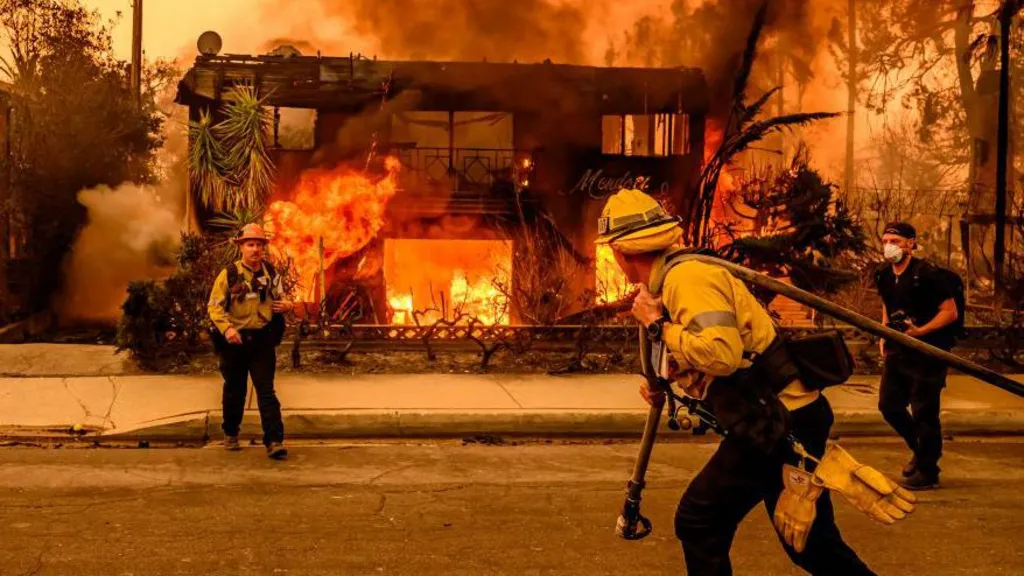A scientific study has confirmed that climate change significantly contributed to the hot, dry conditions that fueled the catastrophic Los Angeles wildfires. The survey conducted by World Weather Attribution (WWA), a globally recognized research group that links extreme weather to climate change, found that climate change made these fire-prone weather conditions 35% more likely to occur.
The findings highlight a troubling trend—LA’s wildfire season is growing longer, while the rainfall that traditionally helps extinguish fires has declined. This combination creates a dangerous cycle where fires burn for extended periods with little natural relief. As the planet warms, the risk of such devastating wildfires increases, placing more lives and communities in harm’s way.
One of the most destructive forces in these wildfires is the Santa Ana winds—powerful, dry gusts that blow from inland California toward the coast. These winds are notorious for transforming small ignitions into raging infernos, spreading flames rapidly over vast areas.
According to Dr. Clair Barnes from Imperial College London, the study’s lead author, the situation is worsening due to climate change. “Drought conditions are more frequently pushing into winter, increasing the chance a fire will break out during strong Santa Ana winds that can turn small ignitions into deadly infernos,” she explained. The prolonged dryness and strong winds have created a perfect storm for extreme fire events.
The WWA team utilized a combination of climate models, statistical analysis, and real-world observations to assess how global warming has influenced extreme weather events. Since the Industrial Revolution, burning coal, oil, and gas has driven billions of tonnes of greenhouse gases into the atmosphere, increasing global temperatures by 1.2°C.
Using these models, scientists found that the extreme heat and dryness that fueled the LA wildfires are expected to occur once every 17 years—a 35% increase in frequency compared to a world without human-caused climate warming. Data showing that LA’s wildfire season has lengthened by an average of 23 days since the mid-19th century further supports these findings.
The recent LA wildfires erupted in early January and had devastating consequences. Over 30 lives have been lost, and more than 10,000 homes have been destroyed as flames spread rapidly across the region. The combination of prolonged dry conditions, stronger winds, and reduced rainfall means that such extreme events are no longer rare—they are becoming the new normal.
Dr. Friederike Otto, head of World Weather Attribution, emphasized the reliability of the study’s findings. “We see that the models show the same results as real-world observations. This gives us strong confidence that climate change is directly influencing extreme events like the LA wildfires,” she said.
The study’s conclusions reinforce what climate scientists have warned for years—rising temperatures are making wildfires more frequent, longer, and more intense. With less rainfall to naturally extinguish fires, prolonged drought conditions, and high winds acting as accelerants, cities like Los Angeles must rethink fire management strategies, strengthen early warning systems, and adopt aggressive carbon reduction policies to prevent further devastation. Read More
News Credit: BBC
Picture Credit: Getty Images



